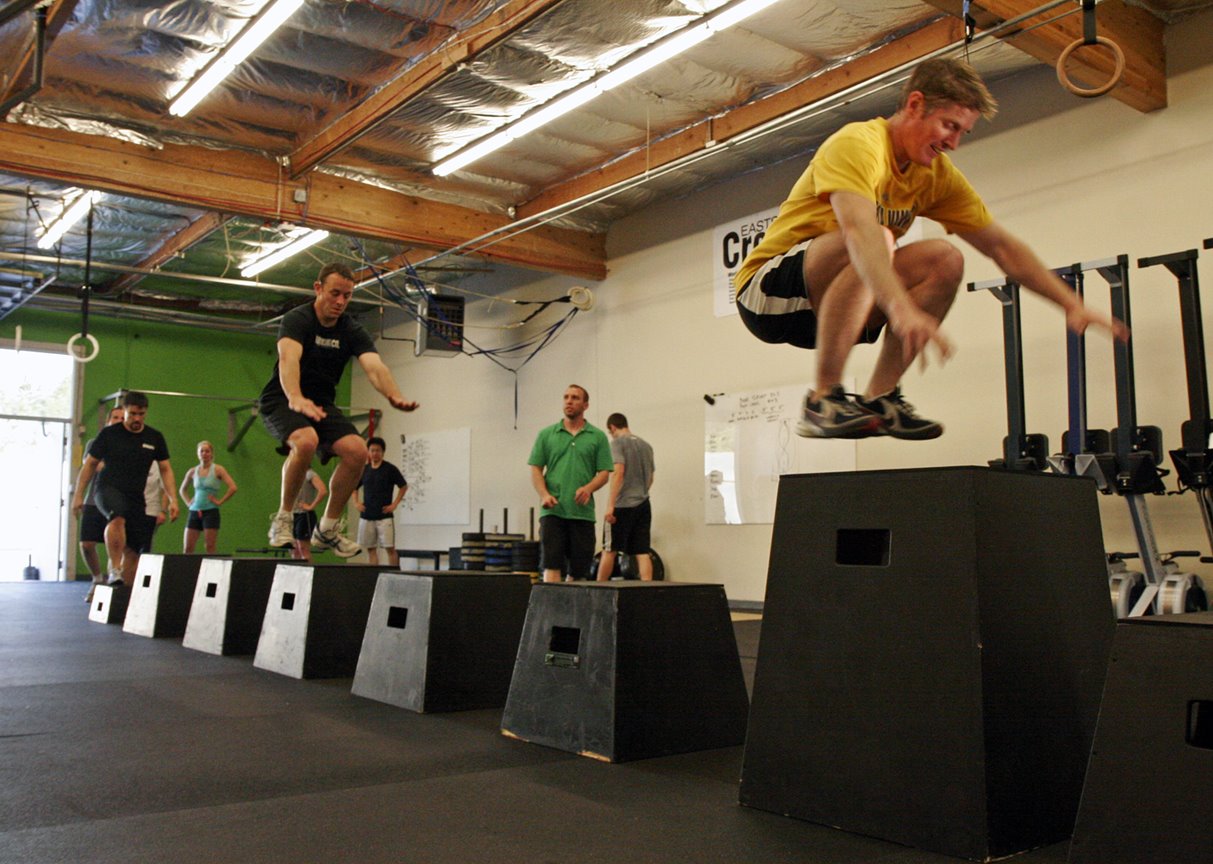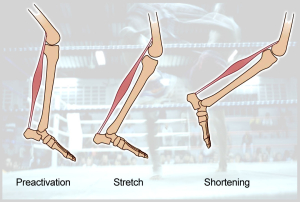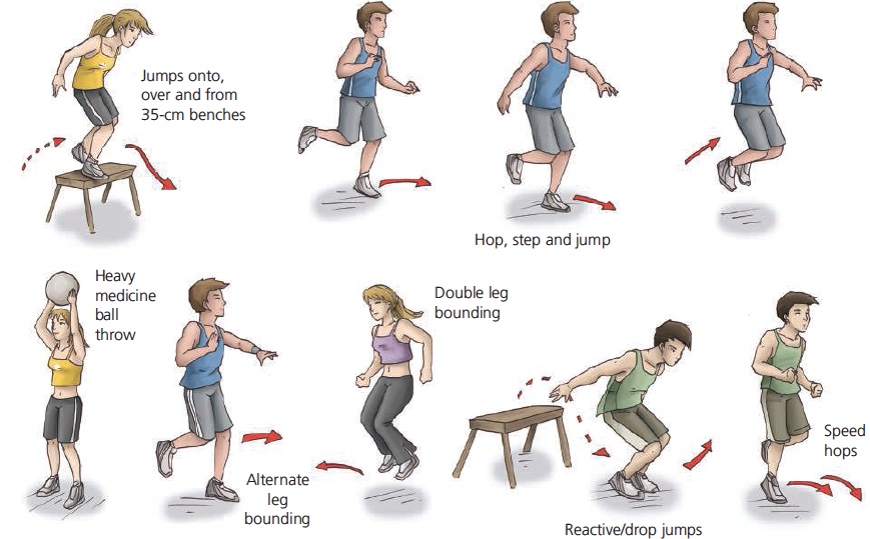Plyometrics is a method of anaerobic training involving a stretch-shortening cycle to exert maximal force in short fast intervals. The stretch-shortening cycle involves a brief eccentric contraction where the muscle is stretched. This stretch produces an “extra” elastic force in the muscles that then adds to the maximal muscular concentric contraction to produce more force and power than would be produced from a static jump.
The stretch-shortening cycle needs to be performed as fast as possible in plyometrics training. In addition to this, the eccentric contraction in plyometrics stimulates the stretch reflex. This reflex is the one checked when the doctor taps your knee and causes a muscular contraction moving your lower leg. When a muscle is stretched at speed, the stretch reflex stimulus a muscular contraction to slow down or reverse the stretching. This reflex is there to help avoid injury and is turned off during static and PNF stretching.
Plyometrics exercises often involve jumping, hopping or sprinting. They are always performed at maximal power and are used for the purpose of developing power, which in turn increases speed.
Plyometric exercises include:
- double legged hurdle jumps
- speed ladders
- power skipping
- vertical depth jumps etc.
The most important aspect of plyometrics training is the speed at which the athlete can switch from the eccentric contraction to the concentric contraction.
Plyometrics has been shown to develop: speed, power, force development and speed endurance. There are many sports that benefit from this training method including: basketball, netball, volleyball, high-jump, and any other sport where speed or power is required.



